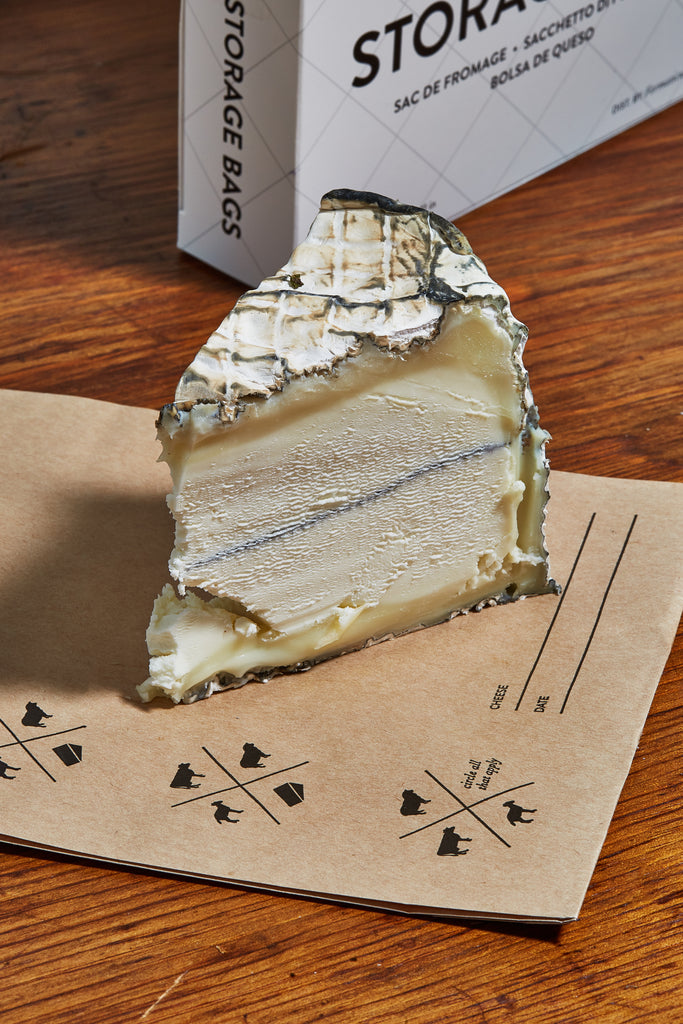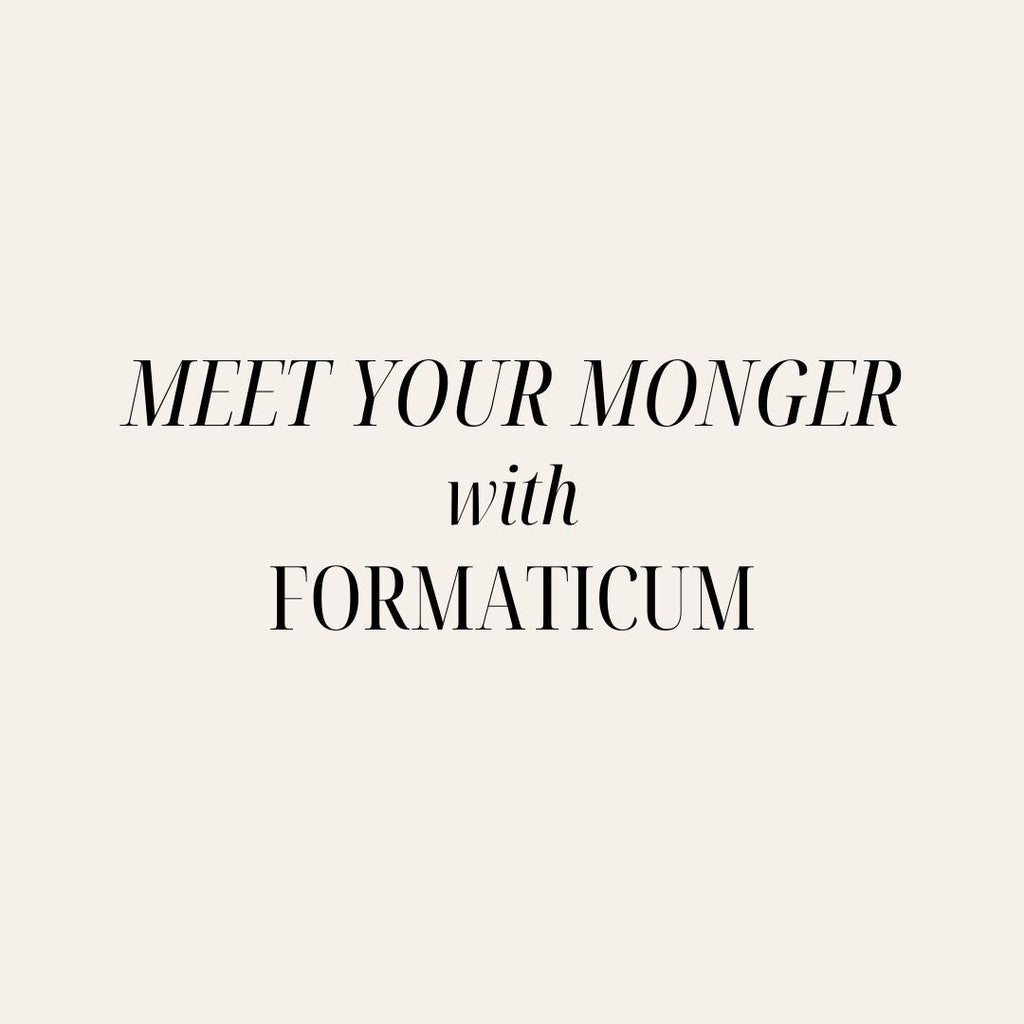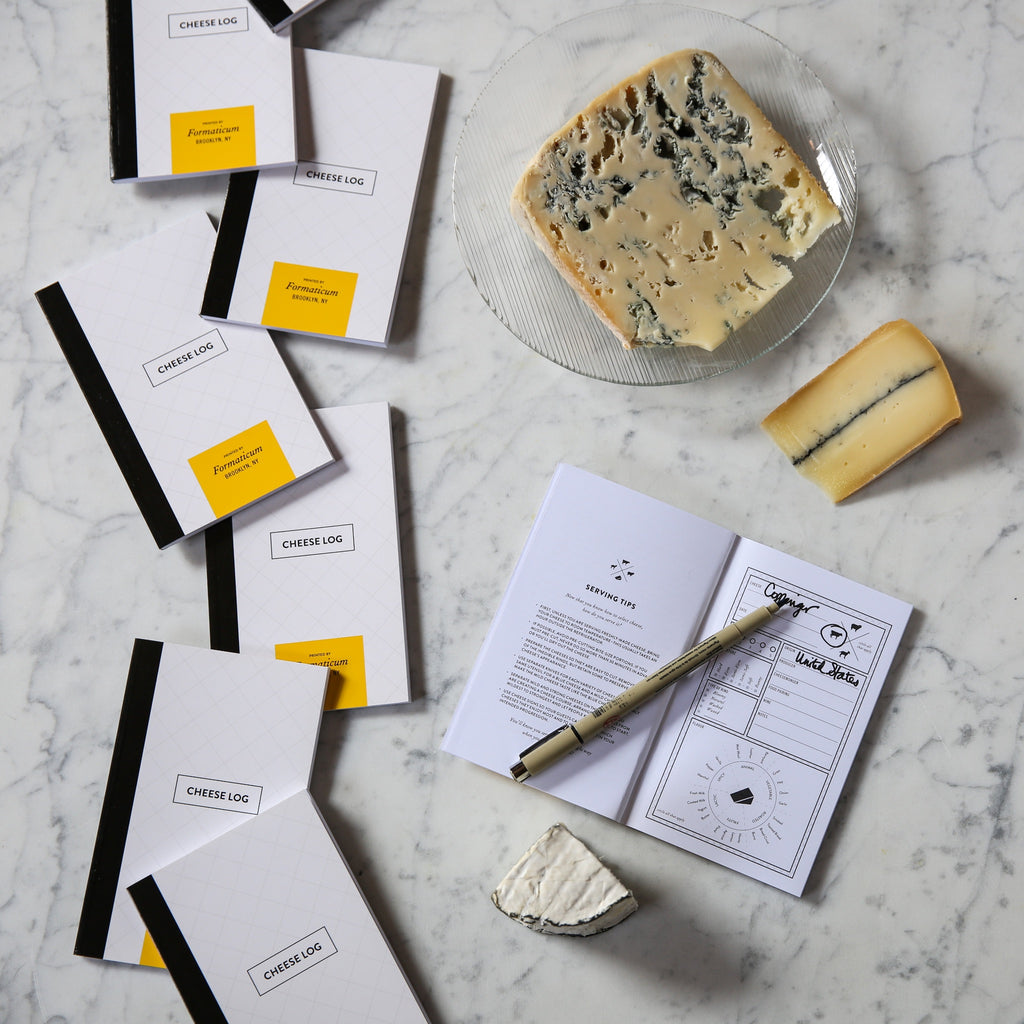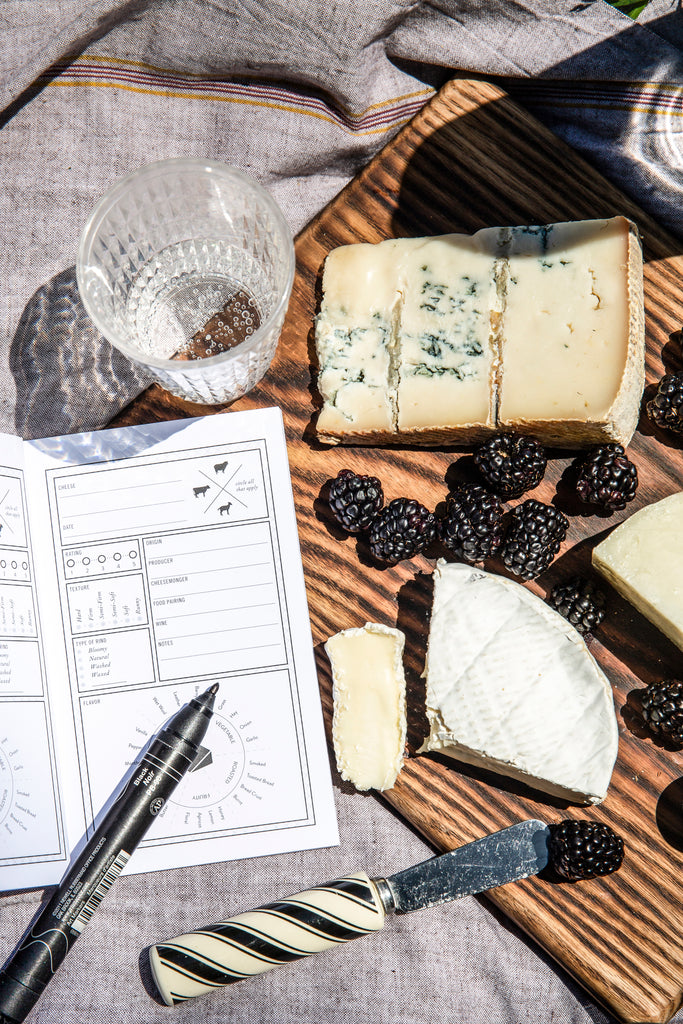Debunking Common Cheese Myths with Formaticum

One of the most wonderful things about cheese is that there is always something new to learn about this delightful dairy product! But the amount of information available on the internet can be overwhelming, and not everything you read is true. Here at Formaticum, we strive to be a reliable source of information for cheese lovers, and all of our posts are written and fact-checked by real cheese professionals with years of experience working behind the counter and in other parts of the industry.
To help you deepen your understand and appreciation for cheese, we've put together a list of some of the most common cheese myths and the truth about them.
MYTH: Lactose-intolerant folks cannot consume cheese.
TRUTH: Longer-aged cheeses contain little to no lactose and are easier on the stomach! Lactose, which is milk sugar, is converted into lactic acid during the cheesemaking process, and any residual lactose continues to be converted throughout aging until it is virtually undetectable. This is why fresh or younger cheeses like Mozzarella or Brie may cause more gastrointestinal distress than harder cheeses like clothbound Cheddar or aged Gouda.
MYTH: Some cheeses are crunchy because of salt crystals.
TRUTH: Those crunchy crystals are not actually salt! Cheeses like aged Gouda and Parmigiano Reggiano contain tyrosine crystals, which are buildups of amino acids that occur naturally as the cheese ages. They're commonly known as "flavor crystals" in the cheese industry, not because they themselves are flavorful, but because their presence usually indicates a longer-aged cheese that most likely will have intense flavor. Some cheddars will contain crystals known as calcium lactate, which can also occur on the outside of a block cheddar and are commonly mistaken for mold.
MYTH: If a cheese has visible blue or green mold on the surface, the entire piece is contaminated and needs to be thrown out.
TRUTH: It is normal and expected for cut pieces of cheese to develop surface mold over time, as molds and yeasts are integral to the cheesemaking and aging process. Cheese would not be cheese without mold! While moldy fresh or soft cheeses should be tossed, harder aged cheeses can and should be triaged. Aged cheeses are low moisture and not porous enough for the mold to penetrate too far, so cheese professionals and microbiologists recommend trimming the affected side and continuing to eat or cook with the cheese. If you want to avoid dealing with mold altogether, store your cheese properly - use Formaticum Cheese Storage Products (we recommend the new Reusable Bags and Sheets!) to keep the cheese fresher, longer in your fridge. You can also buy less cheese, more often to ensure maximum freshness whenever you eat or cook with your cheese.
MYTH: "Sharp" is a catch-all term for "strong" or "very intense" when it comes to describing the flavor of a cheese.
TRUTH: The term "sharp" has recently become very misunderstood due to some very effective marketing from larger cheese producers. "Sharp" actually refers specifically to that acidic, slightly bitter zing that is commonly found in cheeses like cheddar, and increases with age. However, it is not a one-size-fits-all term, as different cheeses from different producers can taste different even at the same age profile. The next time you visit your local cheesemonger, instead of asking for a "sharp" cheese, trying using other adjectives to more effectively describe the flavor profile you're looking for - a grassy or earthy cheddar, an oniony or nutty Alpine, a barnyardy Pecorino or Ossau Iraty. If you don't know where to start, ask your cheesemonger to help! Tasting cheeses with your monger will help you develop your palate and identify the specific flavor profiles you enjoy and want to continue to discover.
MYTH: Orange cheese is a uniquely American invention and denotes lower quality product.
TRUTH: Not all orange cheeses are equal, and all cheeses (including slices) have their place! While some orange cheeses are processed or cheese "product," dying cheese orange has a long and storied history that actually originated in the UK. Cheeses like Red Leicester, Cheshire, and even some Gouda is colored orange using a natural dye called annatto seed, which does not affect the flavor or texture of the cheese. It was originally meant to make the cheese stand out in the market against other, paler cheeses but today is more of a stylistic choice.
MYTH: Raw milk cheeses are not allowed in the United States.
TRUTH: Raw milk cheese is not inherently dangerous, and the FDA allows the import and sale of raw milk cheese that has been aged for a minimum of 60 days. This includes raw milk cheeses that are made in the US, of which there are many! Quite a few of your favorite European cheeses are made with raw milk in their authentic form - for example, Parmigiano Reggiano, Le Gruyère AOP, and Comté must be made only with raw milk, according to PDO regulations. Imitation products like "Parmesan" and generic "gruyere" can be made with pasteurized milk, but cannot receive the PDO seal because they do not follow the stringent rules set by the consortium. Some producers of classic European cheeses like Brie de Meaux and Camembert de Normandie will produce pasteurized versions of these cheeses made specifically for the American market, but the flavor is not quite the same, as raw milk generally produces more complex flavor in cheese than pasteurized milk.
Is there a cheese myth you want us to debunk? Email us at hello@formaticum.com with your questions and comments!
Meet Your Monger: Kai Norton


The February edition of Meet Your Monger highlights Kai Norton, the Cheese Manager at the woman-owned Bedford Cheese Shop in NYC, and one of the brightest stars in the next generation of cheesemongers. They are responsible for keeping the cheese case stocked with the best domestic and imported products they can find, as well as training other mongers on how to properly care for Bedford Cheese Shop's stellar selection. A passionate educator, Kai also teaches public cheese classes in the BCS education space and helps organize monthly cheesemonger education events. Kai also recently competed in the 2023 Cheesemonger Invitational, and was awarded an American Cheese Society scholarship, and they are currently serving on the ACS Education Committee. Read our interview with Kai below to learn more about their current role, how they draw inspiration from the cheese community, and why they love using Formaticum products.
What inspired you to become a cheesemonger?
Once upon a time, I worked at a small local market called Local Foods in Chicago, IL. Having been laid off from a third wave specialty coffee shop at the beginning of 2019, my partner helped me get a job packing bulk items for the pandemic panic-buying era. Everyone needed 25 pounds of beans, rice and flour! So I packed it.
Months down the road, I had moved into the role of Category Buyer. They needed help in the deli and cheese so I opted to help out because it sounded so interesting and I really wanted to learn how to build boards. I was immediately fascinated by this unknown realm- rinds, blues, cheddar meets a blue - I couldn’t believe it.
When Immortal Milk did a highly conceptual guided audio tasting in collaboration with Local Foods, I was amazed - I remember being floored that this was a job!
Conceptual food art brimming with dramaturgical, anthropological and historical styling choices, table design, and thoughtful pairing with unique handmade accoutrement….plus cheese!? It didn’t click until I saw someone who was Black doing this work - I never could have imagined there would be this community, so I went for it.

I scoured the internet to figure out how to pivot from food service/buying to working with cheese once the move to NYC was official. So here we are - I never could have dreamed up this reality but I’m grateful for the roundabouts on the road and the great people I have met along the way.
How do you use Formaticum products at your counter?
We use Formaticum as the recommended cheese storage method for customers coming in to buy large amounts of cheese. They are comfortable getting that extra hunk of Comté because they know it will hold up in the Formaticum Cheese Storage Bags or Sheets, both of which we sell at the counter.

What is your favorite Formaticum product and why?
I am a fan of the Professional 4-Knife Set. It contains four distinct cheese tools: a general cheese knife, blue cheese knife, soft cheese knife and cheese spreader.
Unlike many others, they do the job they are supposed to do without you losing a limb, taking chunks out of your hard cheeses or smooshing that gooey soft goat cheese. It's just a really great cheesemonger toolkit, especially beyond the counter.
If you were a cheese, which one would you be and why?
Zimbro - a cute little Torta-style cheese.
Zimbro can be quiet and understated, and it has a unique tang of personality but only reveals it with time. It can be pudgy, slightly firm or a gooey mess that’s kind of sweet but has a bite when necessary.
It has a lot going on, and is hard to pin down- but reliable and true to itself.
It is evershifting/fermenting.

What is one thing you wish consumers knew about artisan cheese?
The robust ecosystem that sustains such an ancient, sisyphean process born of necessity and passed down to spark passion for tradition in their predecessors.
The energy, sweat, tears, years, land, ruminant, microbe and human hand that align these elements and shepherd these gems into existence. Artisan cheese is a great opportunity to remind consumers of the ethos, the humility, the humanity and respect behind food- but especially artisan cheese. This is what you are paying for.
I’d like consumers to remember to savor.

What is your favorite cheese storage fact?
Mold is not scary.
You can cut off mold and salvage most cheeses- there’s little reason to have any waste if the cheese is first, properly cared for in the case, and then properly wrapped and stored.
We couldn't have said it better ourselves, Kai!
Follow Bedford Cheese Shop on Instagram @bedfordcheeseshop and Formaticum on Instagram and TikTok @formaticum, and stop by BCS if you're in NYC!
To nominate a shop or monger for the Meet Your Monger series, email emilia@formaticum.com.
Monthly Recap: February 2024

February may be the shortest month of the year, but this month certainly wasn't short on cheese information and education! We covered a variety of cheesy topics and even launched some new products. Here's a quick recap of everything we discussed this month:
If you wish you liked blue cheese but it's a bit too intense for you, there's no reason to feel blue! Try these monger-approved pairings to help make blue cheese more approachable and enjoyable. Plus, we included a brief history of blue cheese, and some stellar serving and storage tips.
It's true - good cheese isn't cheap. But do you know why? Read our blog post that breaks down a cheese's journey from farm to cave to boat to cheese shop, and helps foster a better understanding of and appreciation for cheese that is absolutely worth the price tag.
Need a unique gift idea for your special someone? While Valentine's Day may have passed, Tête de Moine rosettes are always a good alternative to roses for any occasion. Learn more about this historic Swiss cheese and how to serve it in this blog post.
What is rennet, and what does it have to do with nursery rhymes? Check out this blog post that explains why rennet is so important to the cheesemaking process, and how to discuss rennet with your cheesemonger to select the cheese that is right for you.
And finally, it's a Leap Year, so it's time to Leap into something new the next time you visit the cheese shop. This blog post outlines some of the most popular cheeses that customers ask for, and what you should ask for if you want to try something new. Remember - your cheesemonger is your friend and your best resource!
Thanks for joining us this month! Check back in March for more cheese serving tips, cheese facts & history, wrapping tutorials, and so much more. And don't forget to follow us on Facebook, Instagram, TikTok, and Youtube. If you have any questions or want to suggest a topic for us to cover in the future, please email emilia@formaticum.com.
Leap Into Something New in 2024!

This year is a Leap Year, meaning there is one extra day in February to eat cheese! If you're stuck in the same routine, week after week, buying the same quarter pound of the same cheese, it's time to Leap into something new for 2024.
Cheesemongers are your tour guide through the cheese case, so don't be afraid to ask for their assistance. They are a wealth of knowledge and are always ready to help you find your next favorite cheese.
To help you get started on your new cheese journey, we've put together a list of some popular cheeses that can help expand your palate and horizons. The list contains some of the more popular cheeses, as well as some suggestions for new things to try that are either similar or the next step to elevate your palate and knowledge.
If you like Humboldt Fog, try an ash-ripened chèvre like Valençay, Selles-sur-Cher, or Blakesville Creamery Linedeline.
If you like Midnight Moon, try Brabander or OG Ghost.
If you like Brie, try Jasper Hill Harbison, Nancy's Camembert, or Moses Sleeper.
If you like Manchego, try Ossau Iraty, Pecorino Sardo, Zamorano, or a traditional raw milk farmhouse Manchego.
If you like Delice de Bourgogne, try Brillat-Savarin, Tulip Tree Trillium, or Nettle Meadow Kunik.
If you like fresh chèvre or goat cheese, try an aged goat cheese like Bucheron, Leonora, or Blakesville Creamery Lake Effect.
If you like block cheddar, try a raw milk block cheddar like Shelburne Farms Cheddar, or even a clothbound cheddar like Montgomery's Cheddar or Cabot Clothbound.
If you like Gruyère, try Uplands Cheese Pleasant Ridge Reserve, Comté, or Beaufort.
If you like Jarlsberg, ask to taste the original Swiss cheese - authentic Emmentaler AOP.
If you like Beemster, try L'Amuse Gouda, Jake's Aged Gouda, or OG Kristal.
If you like Stilton, try Stichelton or Bayley Hazen Blue.
If you like Roquefort, try Fourme d'Ambert or Gorgonzola Piccante.
If you like Piave, try Sapore del Piave, KM 39, or Montasio.
If you like Parmesan, try real Parmigiano Reggiano or Grand Padano.
Once you've selected your cheese and your monger has cut you a piece, it's important to properly care for the cheese once you get it home. Formaticum Reusable Cheese Storage Bags & Sheets are perfect for most styles of cheese and will keep it healthy in your fridge so that the flavor stays as fresh as the day you tasted it in the shop. If you're adventurous, you can ask your cheesemonger to teach you how to wrap like a pro with the Reusable Cheese Storage Sheets, or check out our wrapping tutorials on our website and social media. Reusable Cheese Storage Bags are a quick and easy way to store your cheese without any complicated wrapping techniques involved. Purchase a package on your next cheese shop excursion so that you always have professional cheese storage at your fingertips in the future.

Bienvenue sur le blog de formaticum
Notre maison pour partager nos chroniques fromagères et plus encore.
Categories
Messages récents
Formaticum in France: Go For Beaufort
Cheesemonger Champions: Team USA's Journey to the Mondial du Fromage
Breaking Down Burrata: A Guide to Mozzarella & Friends
Upcoming Events
6 mars 2022 - 15:00
Festival du fromage artisanal de Californie
26 -27 mars 2022
Centre d'événements du comté de Sonoma
1350, chemin Bennet Valle
Santa Rosa, Californie 95404
Connecte-toi avec nous
Rejoignez la newsletter
Inscrivez-vous pour recevoir des offres spéciales, des lancements de nouveaux produits, des mises à jour de la fromagerie, et plus encore.









